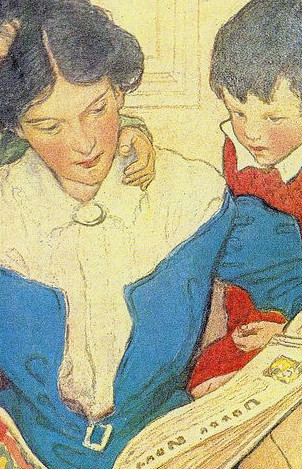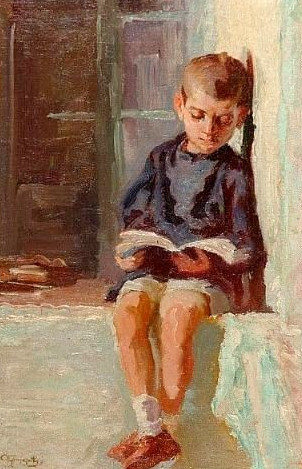Literacy Blogs
- All
- 3-cueing
- academic learning time
- academic vocabulary
- accommodations
- accountability testing
- Active View of Reading
- adolescent literacy
- afterschool programs
- alphabet
- amount of instruction
- amount of reading
- argument
- assessment
- auding
- author awareness
- automaticity
- balanced literacy
- beginning reading
- Book Buddies
- Book Flood
- challenging text
- classroom organization
- close reading
- coaching
- cohesion
- Common Core State Standards
- complex text
- comprehension strategies
- content area reading
- context analysis
- curriculum materials
- Daily 5
- decoding
- departmentalization
- DIBELS
- dictionary skills
- digital texts
- disciplinary literacy
- dyslexia
- early interventions
- effective teachers
- Emily Hanford
- executive function
- family literacy
- fingerpoint reading
- foundational skills
- graphic novels
- guided reading
- heterogeneous grouping of students
- homework
- improving reading achievement
- independent reading
- independent reading level
- informal reading inventories
- informational texts
- instructional level
- invented spelling
- jigsaw instruction
- knowledge
- leadership
- learning disabilities
- Lexiles
- linguistic comprehension
- listening comprehension
- literacy charities
- literacy policy
- literary interpretation
- main idea
- morphology
- motivation
- narrative text
- National Early Literacy Panel
- nonsense words
- oral language
- oral reading fluency
- paraphrasing
- Pause, Prompt, Praise (3P)
- personalized learning
- phonemes
- phonemic awareness
- phonics
- press and media
- principals
- prosody
- Readers' Workshop
- reading comprehension
- reading disabilities
- reading intervention
- reading levels
- reading models
- Reading Recovery
- reading research
- reading skills
- reading strategies
- reading to children
- reading wars
- reading-writing relations
- remedial reading
- rereading
- Response to Intervention
- Scarborough's Rope
- science of reading
- seatwork
- semantics
- sentence comprehension
- sequence of instruction
- set for consistency
- set for variability
- shared reading
- shared reading
- sight vocabulary
- simple view of reading
- Simple View of Reading
- small group instruction
- social studies
- sound walls
- Special Education
- speech-to-print phonics
- spelling
- stamina
- summarizing
- Sustained Silent Reading
- syllabication
- syntax
- syntax
- testing
- text complexity
- text interpretation
- text reading fluency
- text structure
- theme
- think-pair-share
- trauma
- visualization
- vocabulary
- word walls
- writing
- zone of proximal development (ZPD)
Teaching My Daughters to Read -- Part III, Phonics
And what about phonics? So far, I have explained the literacy environment, print awareness, and sight word teaching that were part of teaching my daughters to read, but phonics also played an important role. I have explained that my children were remembering words from their language experience stories. My teacher preparation students at the university asked me how many words my daughters would need to know before they could read; a very interesting question. In fact, there is no set number. Memorizing some words is always part of beginning reading, but reading is more than memorizing words. Phonics both reduces students’ reliance on ...
Teaching My Daughters to Read -- Part II, Print Awareness
Last week, I began a multi-part series on how I taught my daughters to read. My oldest daughter wryly replied to that entry, suggesting I could have saved a lot of pixels if I had just said that I hired a tutor…. And her son who just had his third birthday (and who did not read that entry) informed me that his goal for being 3-years-old was to read words. In that first entry, I described the literacy context in which my daughters grew up. Now, let’s turn to the more formal side of the teaching. When the girls were 2-3 years ...
Teaching My Daughters to Read -- Part I, Context
Blast from the Past: This blog entry was first issued on June 30, 2014 and was reissued on March 28, 2020. As I re-introduce this piece, we are sheltering in place as is so much of the world. That means schools are closed in many places and teachers and parents are concerned about what is being lost from children's education. As with many of you, I've been trying to help protect children's learning during these fraught times. Which brings us to today's blog entry, this one about how I taught my own children to read at home. This blog was ...
The New Bane of Beginning Reading Instruction: Phony Rigor
I’m pro rigor. And I believe my bona fides are in order on that one. I’ve argued for teaching children to read very early for more than 40 years; even teaching my own kids to read before they entered school (and, yes, I’m working on the grandchildren already; their ages range from 5 months to 3-years-old). The time to teach young kids to read is when you become responsible for the child and not a moment earlier. I’m not a big fan of some of programs like “Teach Your Baby to Read,” but only because I don’t think ...
The Best Oral Reading Techniques for Beginners
Teacher question: Could you comment on first grade small group reading instruction, specifically round robin, "whisper" reading, echo reading, choral reading, etc.? You have mentioned partner reading and echo reading. Is there research to clearly favor one over another? My practice is to use a variety, although not round robin with the whole class, but my principal is pushing student driven discussion, partner reading, with the goal of student engagement. What does the research say? Shanahan response: Beginning readers cannot read silently. They need to read aloud to be able to figure out the words and to understand the author’s message; so round ...
How to Organize Daily Literacy Instruction, Part IV
Blast from the Past: This blog was first posted on June 10, 2014; and reposted May 13, 2023. When it first appeared, it was the fourth in a sequence (just type “How to Organize Daily Literacy Instruction” into the search engine to find the others). A teacher had queried me about, Daily 5, a popular organizational plan. I was critical of it because it emphasized classroom activities rather than learning. I wrote about my own framework that had been successful in supporting efforts to improve reading achievement. That scheme calls for 2-3 hours per day of reading and writing instruction ...
How to Organize Daily Instruction, Part III
Blast from the Past: This entry was first published on June 1, 2014, and is being re-posted on March 30, 2019. The reason for the re-posting? In the last two weeks I have received several questions and several requests for speaking engagements focused specifically on what the literacy school day should look like. This entry doesn't propose a particular schedule, but it does provide the key tenets on which to plan a day's lessons. Man, I hate to see so many frustrated teachers. For the past couple weeks, I’ve been hearing from teachers who use Daily 5. They’re mad because I criticized the idea of organizing their ...
How to Organize Daily Instruction, Part II
Last week I explained that it makes sense to organize instruction in ways that allots time to learning goals—rather than to instructional activities. It is not that teachers don’t need activities, just that activities don’t have a one-to-one relationship with instructional outcomes. That's why approaches like Daily 5 and CAFE are simplistic and don't have an especially powerful relationship with learning. Those approaches get teachers aimed at particular classroom activities, without sufficient attention to the outcomes. How should teachers determine which activities to use towards these essential ends? Research. For example, imagine you required 30 minutes per day for paired reading (an ...
How to Organize Daily Instruction Part I
Blast from the Past: First issued May 18, 2014 and reposted on September 24, 2022. These days I'm often asked how I would organize my reading instruction. In this blog entry I provided that kind of description (and I followed it with two more over the subsequent weeks to expand upon those ideas). You can find those blogs by typing How to Organize Daily Instruction into the search function of my site. I think these entries provide some valuable guidance in how to make sure that you are successfully addressing educational standards and meeting students needs in ways consistent with ...
Another Voice on Common Core
Pat Wingert has an article on Common Core in Atlantic this month that I figure in: Atlantic Magazine: When English Proficiency Isn't Enough
.jpeg)






-The-script.jpg)
